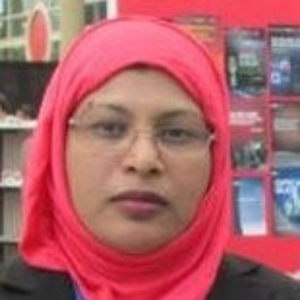Title : Towards urban nutrition security: The impact of various light spectrum on antioxidant-Rich fresh food production in the city
Abstract:
Currently, 56.9% of the world's population lives in cities, with 68% anticipated to do so by 2050. Rapid urbanization is associated with increased urban poverty, pollution, food insecurity, malnutrition, and unemployment. The majority of people who live in cities consume ready-to-eat foods that are dense in sugar, which is contributing to the rise in obesity. Poor nutrition is also a major contributing factor to the rise in non-communicable diseases. Antioxidant-rich fresh food is beneficial for a healthy diet. Light is the most important factor in plant growth. Plants react to changing light quality through a variety of dynamic and complex systems. Light wavelengths cause plants to undergo a variety of morphological and biochemical changes that are essential to their health. LED light may be programmed to target specific wavelengths that plants absorb. This allows growers to tailor the light wavelengths needed to optimize yield while limiting the wavelengths that minimally affect plant growth. Lettuce is a prominent fresh food that plays a significant role in the diet and nutrition of North Americans. The purpose of this study was to look into the effects of various LEDs on lettuce vegetative development and antioxidant accumulation. In this study, we investigated different ratios of red and blue LED light treatments. Lettuce (Lactuca sativa) seedlings were grown in a growth chamber at 25+/-2.5°C, with ambient CO2 and a photoperiod of 16 hours light and 8 hours darkness under fluorescent light. Seeds were germinated, and two weeks later, seedlings were planted in one-inch rockwool cubes in trays for soilless hydroponic culture with half-strength Hoagland's solution, then moved into an LED light chamber. Lettuce plants were cultured for four weeks after transplantation, and fresh and dry mass were measured. Leaf tissue samples were frozen prior to lyophilization. Antioxidant properties were determined using freeze-dried leaf tissues. The lowest significant growth (fresh mass and dry mass) and accumulation of antioxidant properties were seen with higher level of red LED. However, higher antioxidant accumulation was found when plant cultured under higher level of blue light. This study will help improve the choosing of LEDs for control environment production in the city.
Audience Take Away:
- The audience will gain knowledge about food's antioxidant component. Additionally, they will discover how vital fresh foods high in antioxidants are to human health. The vast majority of urban dwellers eat ready-to-eat foods high in sugar. One of the main reasons non-communicable diseases are on the rise is poor nutrition. Healthy eating can benefit from fresh food high in antioxidants. This will contribute to an improved understanding of food.
- The audience that are interested in working in the food processing, food chemistry, or production sectors will benefit from this presentation. Those in the audience who intend to work in the field of urban food security will also benefit from this.
- This will assist other faculty members interested in urban sustainability, antioxidant-rich functional foods, and food chemistry to broaden their knowledge in research and teaching.



